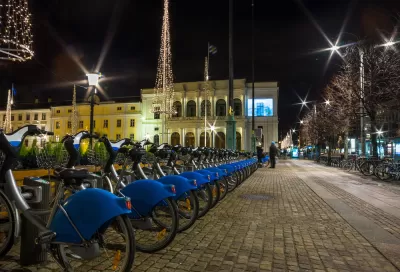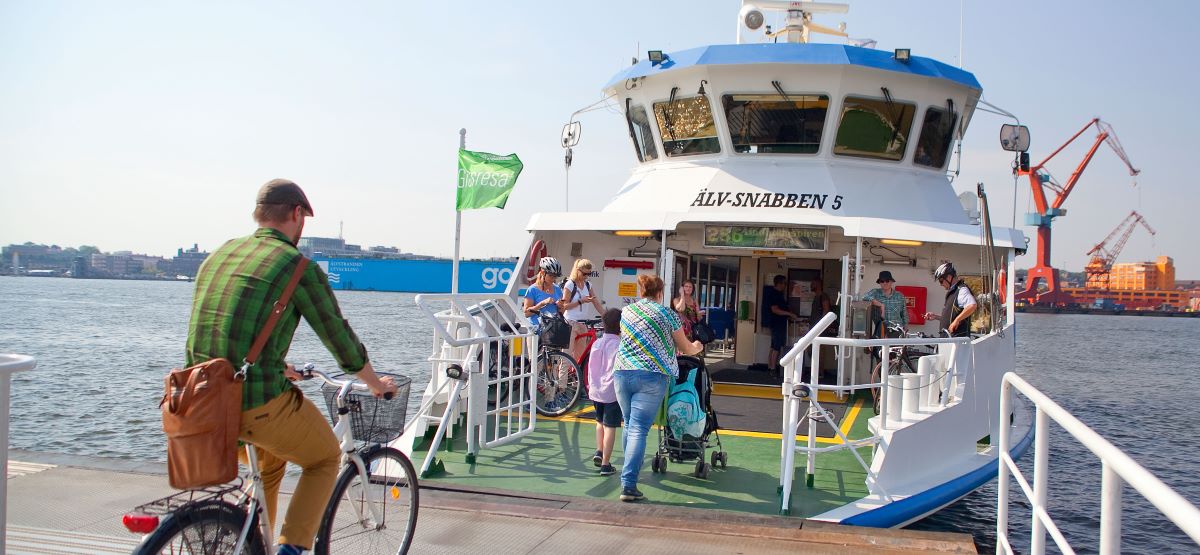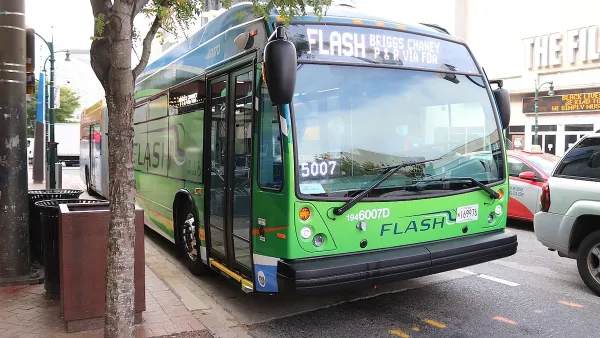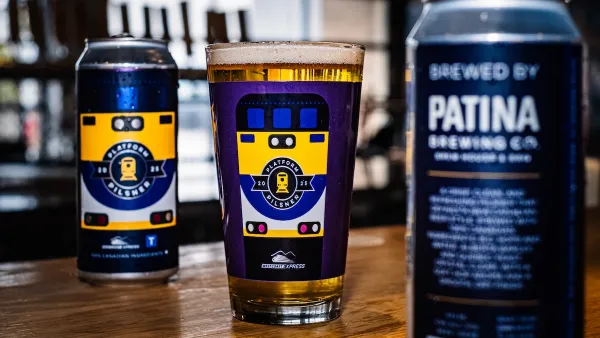Smart cities around the world are finding creative ways to make walking, cycling, public transit, carsharing and delivery services more attractive and efficient. Way to go!

Greetings from Göteborg (also spelled, Gothenburg), Sweden, where I recently spoke about sustainable city planning at the Mobility in Smart Cities Symposium. Göteborg is an amazing city which is applying very smart planning. Let me share some highlights.
In 2013, Goteborg, with just over a half-million residents, became the world’s smallest city to implement congestion pricing. The city also has an extensive tram system and a new Bus Rapid Transit system that share an extensive network of dedicated traffic lanes that allow public transit vehicles to avoid congestion when traveling through the city.

The city also has a network of ferry boats that carry thousands of pedestrians and cyclists between neighborhoods along its waterfront.

In addition, Goteborg has developed a extensive bicycle route network and bikesharing stations around the city, and during the last decade has redeveloped its downtown core, once crowded with cars, into a grid of cobblestone streets that limit automobile traffic volumes and speeds. It is also applying smart growth development policies and parking management strategies.
The overall result of these policies is terrific: although the city is very modern, dynamic and affluent, it has a low automobile mode share, minimal automobile traffic and attractive streets.
Since Goteborg is the home of the Volvo corporation, I used his opportunity to investigate the state-of-art in clean and quite buses, a critical issue in creating more attractive cities, as Lindy Day recently discussed in her Planetizen blog, City Living Without the Racket.
During the Smart Cities Symposium, Volvo demonstrated its new hybrid electric buses, which include several features to minimize urban noise. These buses have relatively large battery packs plus quick recharging stations at some bus stops, which allow the buses to operate entirely in electric mode in central districts and only use their diesel engines in outlying areas. The manufacture claims that under suitable conditions they have lower total overall operating costs than conventional diesel buses.
I also spoke with leading diesel engineers to find out about other potential ways to reduce diesel bus noise. Buses that meet the new Euro VI standard tend to be quieter than older models, but still noisier than optimal. According to the experts, it is possible to reduce noise even more by designing vehicles with more engine isolation, larger mufflers, different tuning, and active noise suppression. This would moderately increase production costs and may slightly reduce fuel economy, but I suspect the results would be worthwhile because quieter buses would attract more passengers and help create more attractive and compact cities; a 5-10% increase in purchase or fuel consumption would pay for itself if the buses attract 10% more discretionary travellers (people who would otherwise drive).
Of course, Goteborg is not the only city that is using new technologies to help make public transit more attractive. For example, all new buses purchased by the IETT transit agency in Istanbul, Turkey have bike racks, free onboard wifi services and USB ports at each seat, amenities that have minimal extra cost when incorporated into new buses. Other cities are upgrading train stations and bus stops, providing real time train and bus arrival information, and more convenient transit fare payment options.
These are examples of ways that smart cities are making walking, cycling, public transit, carsharing and delivery services, and therefore urban living, more attractive and efficient.

Planetizen Federal Action Tracker
A weekly monitor of how Trump’s orders and actions are impacting planners and planning in America.

Restaurant Patios Were a Pandemic Win — Why Were They so Hard to Keep?
Social distancing requirements and changes in travel patterns prompted cities to pilot new uses for street and sidewalk space. Then it got complicated.

Map: Where Senate Republicans Want to Sell Your Public Lands
For public land advocates, the Senate Republicans’ proposal to sell millions of acres of public land in the West is “the biggest fight of their careers.”

Maui's Vacation Rental Debate Turns Ugly
Verbal attacks, misinformation campaigns and fistfights plague a high-stakes debate to convert thousands of vacation rentals into long-term housing.

San Francisco Suspends Traffic Calming Amidst Record Deaths
Citing “a challenging fiscal landscape,” the city will cease the program on the heels of 42 traffic deaths, including 24 pedestrians.

California Homeless Arrests, Citations Spike After Ruling
An investigation reveals that anti-homeless actions increased up to 500% after Grants Pass v. Johnson — even in cities claiming no policy change.
Urban Design for Planners 1: Software Tools
This six-course series explores essential urban design concepts using open source software and equips planners with the tools they need to participate fully in the urban design process.
Planning for Universal Design
Learn the tools for implementing Universal Design in planning regulations.
Heyer Gruel & Associates PA
JM Goldson LLC
Custer County Colorado
City of Camden Redevelopment Agency
City of Astoria
Transportation Research & Education Center (TREC) at Portland State University
Camden Redevelopment Agency
City of Claremont
Municipality of Princeton (NJ)






























